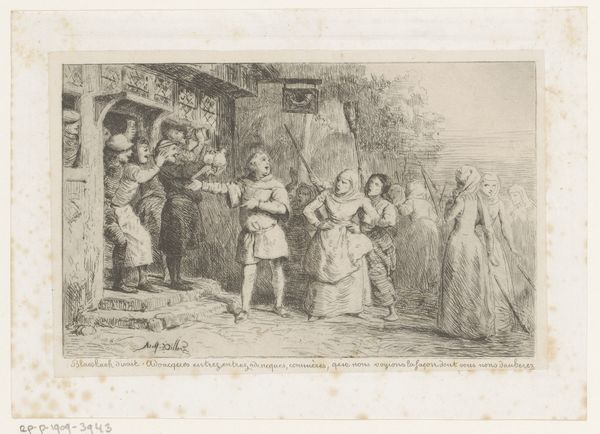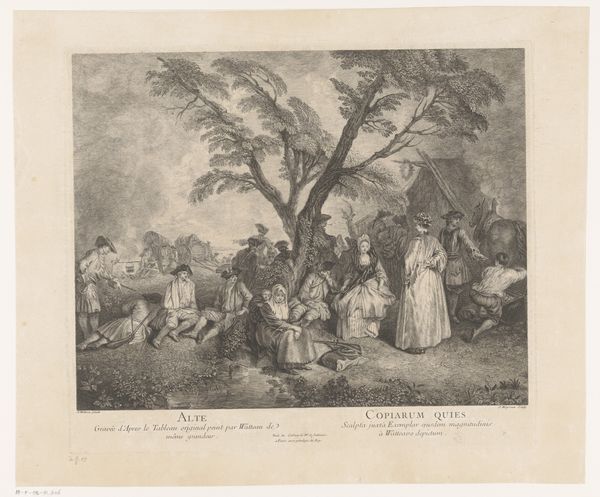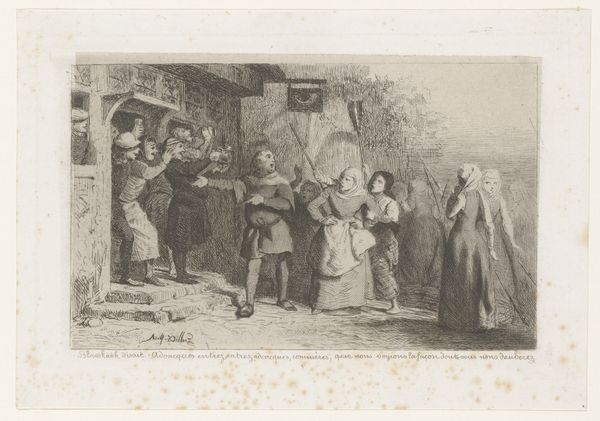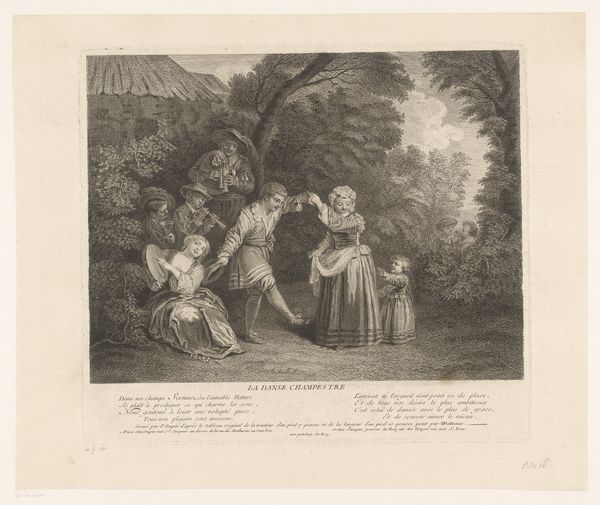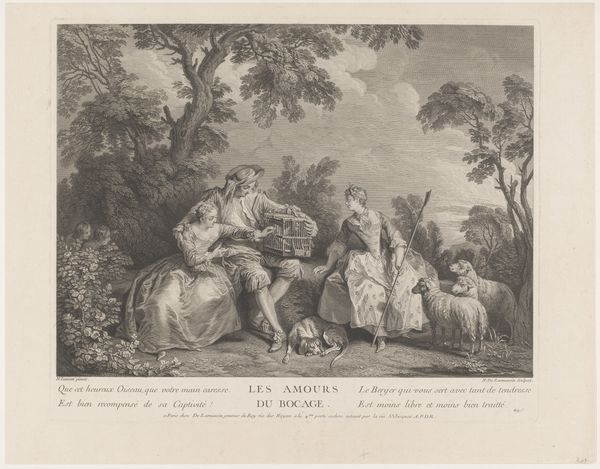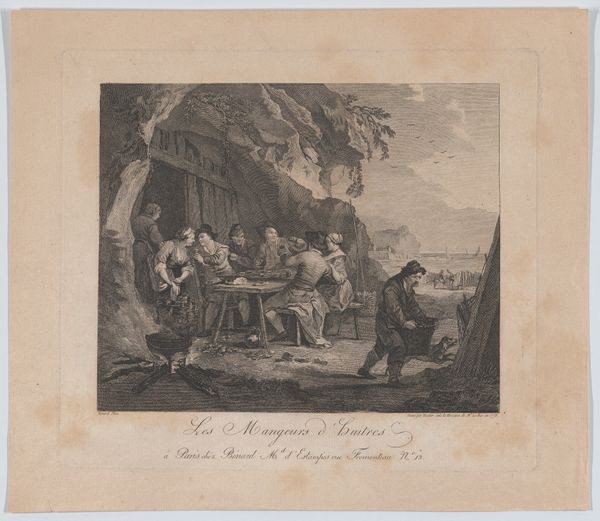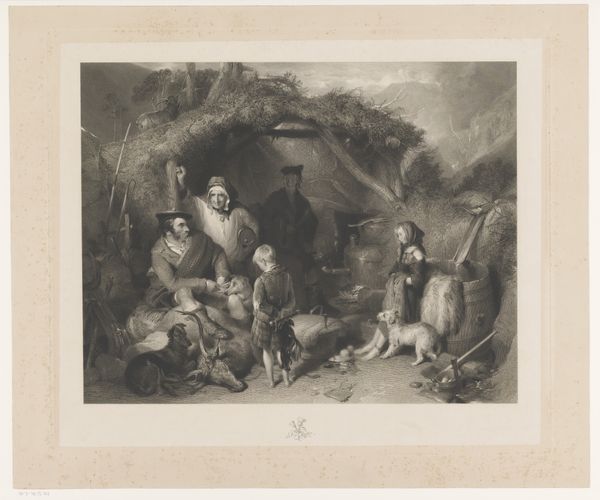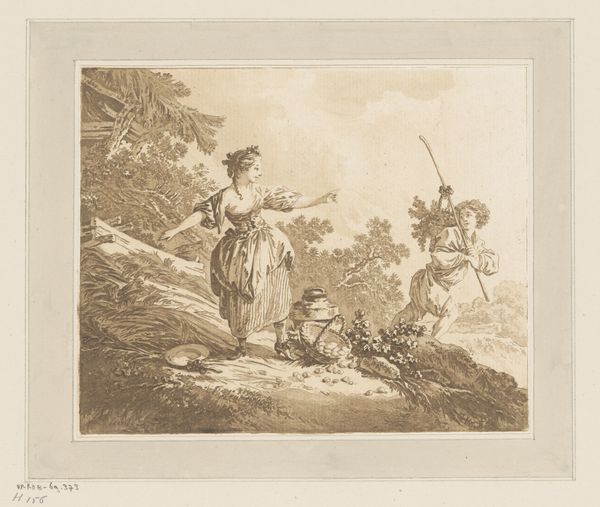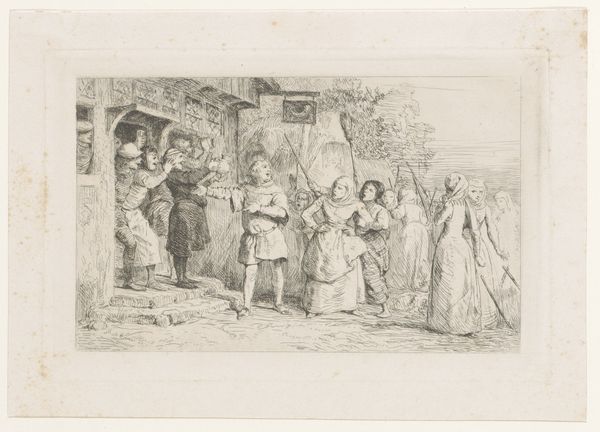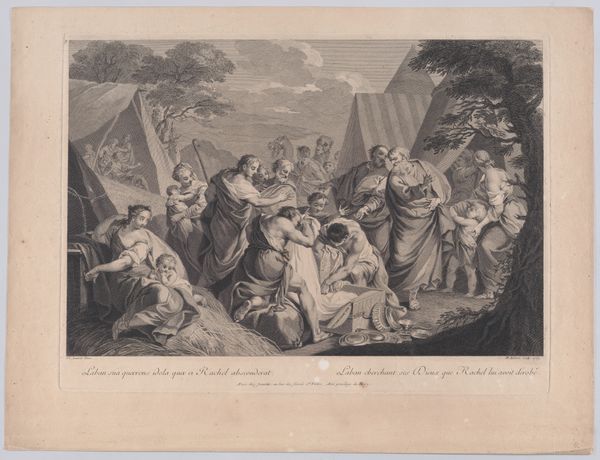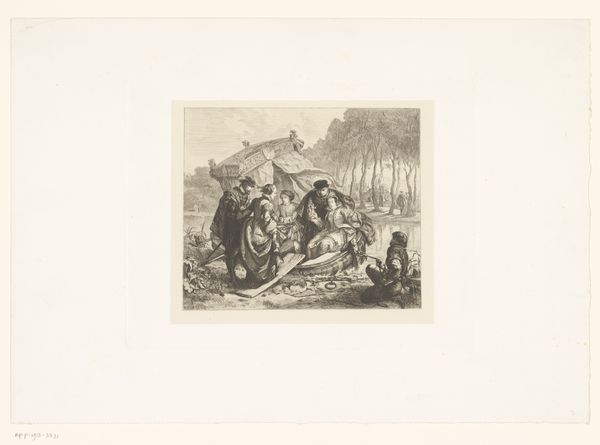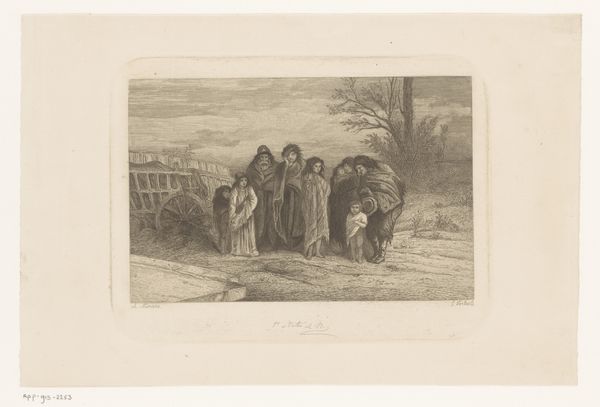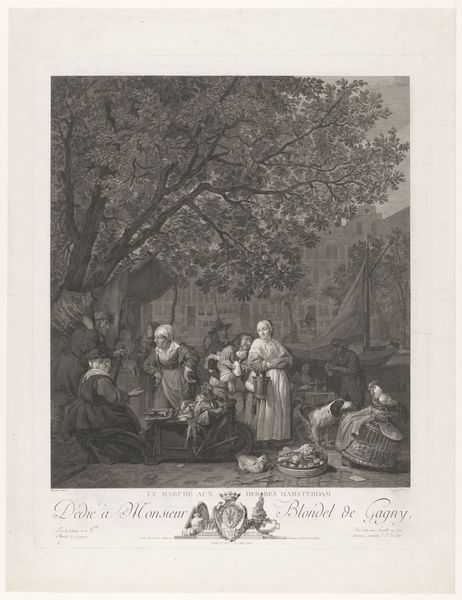
Dimensions: height 250 mm, width 340 mm
Copyright: Rijks Museum: Open Domain
Joseph Meganck created this print, "Travelling Musicians at a Water Source in the Landscape," using a technique called etching. Think of etching as drawing with acid, and it was a popular medium for disseminating images in the 19th century. Meganck would have coated a metal plate with a waxy, acid-resistant ground, then scratched an image into it with a sharp needle, exposing the metal underneath. He’d then submerge the plate in acid, which bites into the exposed lines, creating grooves. These grooves hold ink, which can be printed onto paper. Look closely, and you’ll see a certain graphic quality to the lines, distinct from a drawing. The print shows a scene of itinerant musicians seeking water, and perhaps some charity. The artist is not only representing a scene, but also using the print medium to circulate it widely. In this sense, "Travelling Musicians" reflects the broader social context of the 1800s, when printed images became increasingly important as a means of communication. It’s a reminder that the art world is just one part of a larger ecosystem of labor, materials, and exchange.
Comments
No comments
Be the first to comment and join the conversation on the ultimate creative platform.
